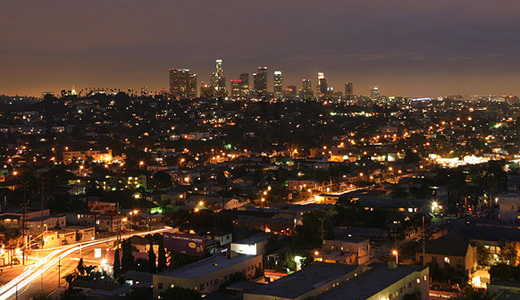 Unvanquished: Joseph Pilsudski, Resurrected Poland and the Struggle for Eastern Europe
Unvanquished: Joseph Pilsudski, Resurrected Poland and the Struggle for Eastern Europe
By Peter Hetherington
Pingora Press, Second edition, 2012
752 pages
“I say that the impenetrable gates of death do not exist for some people. They attest to the fact that the laws of greatness differ from the laws of smallness.”
These words were declaimed at the 1927 burial of Polish poet Juliusz Słowacki in the Wawel crypts in Kraków, as justification for the poet’s rubbing shoulders in the afterlife with Polish royalty. The laws of greatness equally well applied to the speaker: Józef (Joseph) Piłsudski (1867-1935). His eventful and fascinating life is the subject of the book under review, written by Peter Hetherington. Piłsudski, incidentally, would follow Słowacki into the crypts in 1935, his reward for having devoted his life to the fight for a future Poland (attained in 1918) and protecting it from its rapacious neighbors, Germany and the USSR.
While in the last several years Wawel burials have become a bone of contention, this 1935 burial was unquestionably deserved–something that even a number of Piłsudski’s political opponents grudgingly acknowledged. For (among other things) the First Marshal of Poland was responsible for the Poles’ amazing victory in the Polish-Soviet War of 1920, defeating the red (communist) menace that was threatening to spread across Europe. Thanks to Piłsudski and the Poles, the West was spared the specter of world revolution.
Not that the West was grateful. It had forgotten that Poland, in centuries past, had been a significant regional power– the largest state in continental Europe–and might conceivably wish to return to its historic dimensions (or at a minimum be strong enough to keep its neighbors at bay). Politicians such as the rabidly anti-Polish British Prime Minister David Lloyd George (for whom Hetherington has caustic words) could not even bring themselves to congratulate Piłsudski on the victory. (Lloyd George was the man who declared he would not give Upper Silesia to Poland any more “than he would give a clock to a monkey” [p. 368].) Indeed: the British position vis-à-vis the new Polish state was egregious. Eager to restore a balance of power in which Germany would figure more prominently and insensitive to Poles’ concerns about their Russian neighbors, Lloyd George interfered in Polish affairs as best he could. Before long, another British prime minister would delude himself that he had achieved “peace in our time”–and we all know what happened next…
But that was Europe after Piłsudski. The First Marshal of Poland had a one-track mind: he was preoccupied with Polish independence–how to get it, how to hold onto it. To this end, he achieved–against all odds–more than could have been expected from any mere mortal. The story of his life and achievements is colorful, and rendered colorfully here.
When Piłsudski was born, in 1867, Poles lived under Prussian, Austrian, and Russian rule. To be a Pole–at least, one committed to the cause of Polish independence–meant that one had to be a revolutionary. This was Piłsudski’s calling. He began as a socialist, but a socialist of a certain type: Piłsudski later famously remarked that he had “left the socialist tram at the stop named Independence.” Indefatigable, for years he nearly singlehandedly published the underground socialist paper under Russian eyes. He planned and executed what Hetherington terms “the great train robbery” at the Bezdany train station in 1908, gaining money needed to fund his revolutionary activities and making a name for himself in the process. (Hetherington tells this story well.)
Trading his revolver (and bombs) for a rifle, Piłsudski taught himself the art of war. He established paramilitary groups under Austrian aegis, and his men–transformed into the Cadre Company (later part of the First Brigade of the Polish Legions)–made the first military incursion into Russian territory in August 1914. Although not decisive in the war, the existence of the Polish Legions was in itself of great psychological significance. Piłsudski would become the first chief of state of the new Poland, the man who would ultimately shape the country’s borders in the course of a number of wars–one of them the Polish-Soviet War. Uninterested in the day-to-day running of the state, Piłsudski devoted his days to military questions and the international situation, which required Poland to be ready to defend itself.
Poland’s First Marshal would also do things that tarnished his reputation (and Hetherington calls a spade a spade). Piłsudski’s coup d’état of 1926 resulted in casualties and divided his beloved military. His disdain for the quarrelsome Polish parliament ultimately resulted in his flagrant mistreatment of the political opposition. Poland under Piłsudski’s Sanacja regime became authoritarian. And, although Piłsudski formulated a “muscular” foreign policy (p. 706), at one point even staring down Hitler, the First Marshal did not prepare his coterie of colonels–all former Legionnaires–to rule after him.
The author of this mammoth (725 pages long!) biography is to be congratulated for his monumental and somewhat incredible effort. This reviewer would never have imagined that a geologist with no historical training and no connection to Poland whatsoever would take on such a labor of love, let alone produce such an exhaustive and thoughtful biography of Piłsudski. Yet Hetherington puts these seeming drawbacks to positive use. Unlike some other authors, he has no axe to grind. Hetherington writes it as he sees it, informed by the extant English-language works on Piłsudski and Poland–his main limitation. And he writes it as he thinks it should be written. Unusually for a biography, the author reviews the entire history of Poland (!), so that the uninformed reader can place Piłsudski in the proper context–a context known to so few non-Poles. Those four chapters of historical background (out of a total of 32) follow a riveting initial tale of how Piłsudski managed to escape from the dreaded Tenth Pavilion of the Warsaw Citadel, the tsarist prison from which no one escaped. The reader will find it hard to put the book down after that.
Hetherington writes with a certain flair, his style breezy and colloquial (at times too much so for this reviewer, a trained historian). Despite this being the second (revised) edition–the first came out in 2011–there are still a number of typos. And the continuous numbering of the footnotes (not always helpful, and not all correct) means that their numbering reaches well into the thousands, which can be irritating (the long superscripts really break up the text). The book also contains maps and photographs (many of these with extensive captions) as well as several appendices. Hetherington is at his best when detailing Piłsudski’s revolutionary and armed exploits, so many of which demonstrated the Pole’s unconventional streak, and his foreign policy. While this historian would quibble with some details, mostly of secondary importance to the biography, they do not distort the overall thrust and mission of the book, which brings Piłsudski to life on its pages.
CR




Pingback: 2014: The Year of Anniversaries